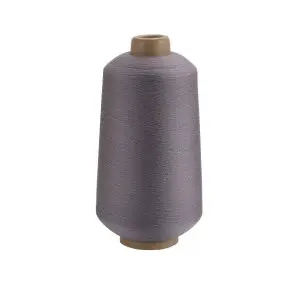There are two types of hot melt yarn: polyester hot melt yarn and nylon hot melt yarn. The melting point can be controlled between 85°C and 180°C by adjusting the raw material properties. At normal temperature, the thermal fuse is woven into a fabric with other fibers, and then pressure is applied to the fabric under dry heat or moist heat. When the temperature is higher than the melting point of the thermal fuse, the thermal fuse gradually melts. At this temperature, other conventional fibers remain unchanged and are then bonded together by the hot melt filaments.
Nylon hot melt yarn has a low melting point, [melting point] 95°C, thermoplasticity and self-adhesiveness. When heated to a certain temperature, it will soften and melt into a viscous fluid with certain fluidity, and then solidify again into a solid after cooling.
Characteristics of nylon hot-melt yarn: nylon hot-melt yarn is mixed with conventional polyester, nylon, wool or other fibers to produce non-woven fabrics or knitted or woven into thermally bonded fiber products. It has soft hand feel, high strength, washability, crispness and ease of use. Features include cleanliness and no environmental pollution.
Application of nylon hot melt yarn: mainly for thermal bonding, used in 3D shoe upper weaving, Bondi thread, trouser cuff stickers, soft gauze curtains, vertical curtains, high-strength webbing, wool carpets, cushions, car linings and other industries .
Nylon hot melt wire specifications: 30-300D
Post time: Jul-24-2024

